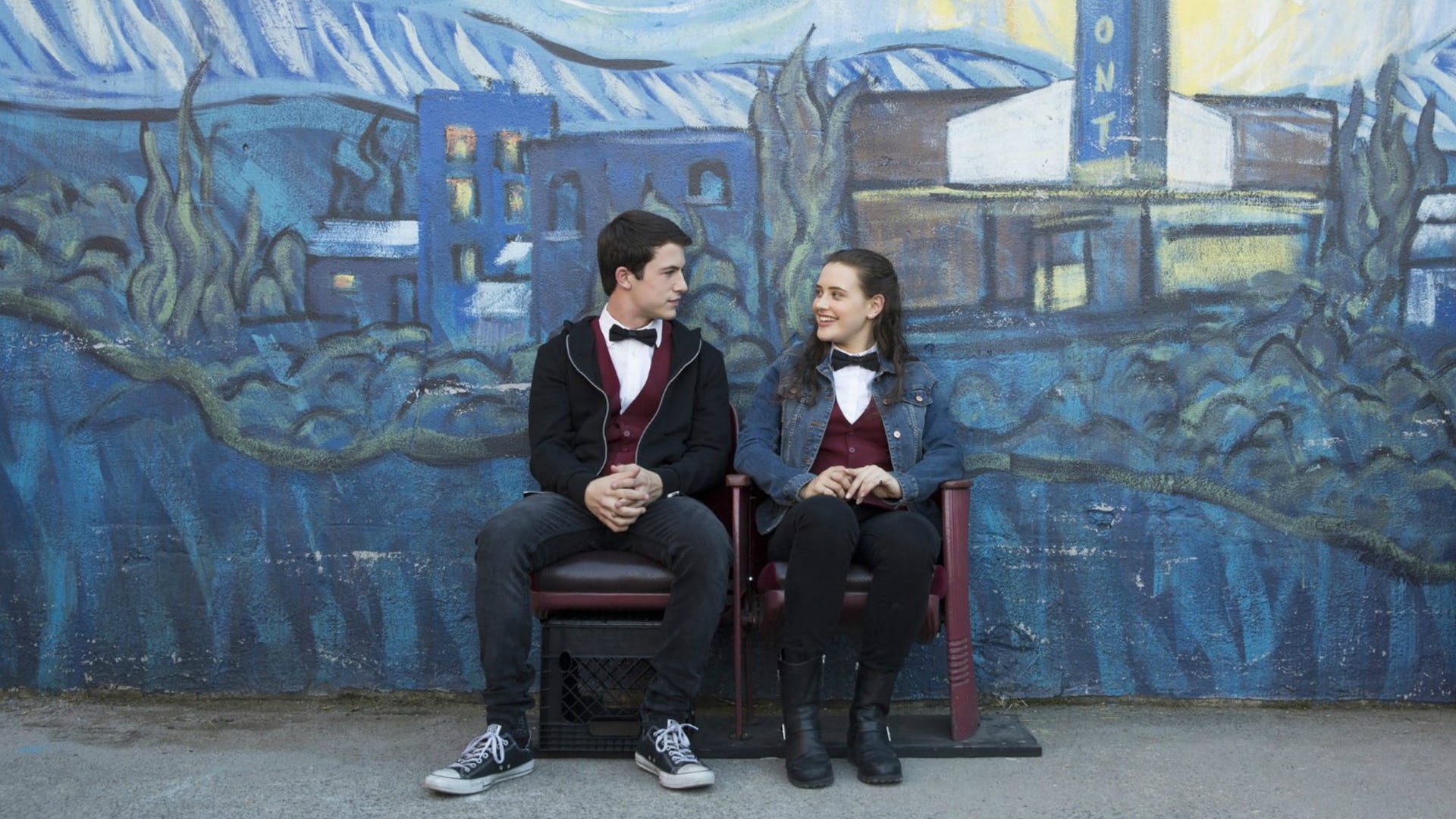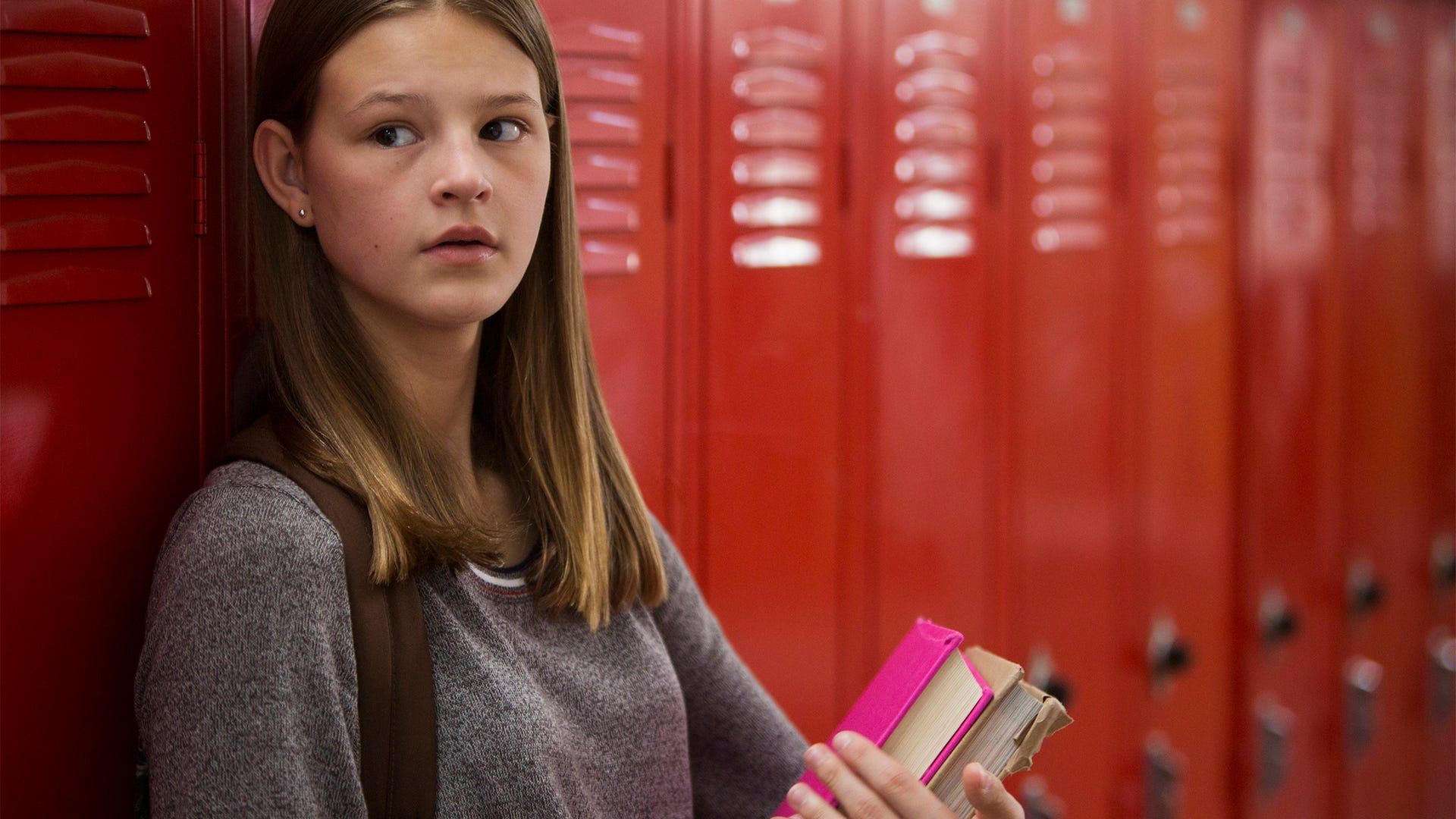Join or Sign In
Sign in to customize your TV listings
By joining TV Guide, you agree to our Terms of Use and acknowledge the data practices in our Privacy Policy.
Netflix Is Coming of Age by Cornering the Market on Coming-of-Age Shows
Stranger Things was only the beginning
If you weren't paying attention, it's possible you missed a major shift in Netflix's programming over the last year. The streaming service, once known for adult-oriented series like House of Cards and Orange Is the New Black, has quietly pivoted to focus more on young adult programming -- or rather, programming giving voices to young adults by focusing on the universal themes and struggles of youth. And by cornering the market on coming-of-age sagas, Netflix itself is now also coming of age.
As a company, Netflix is still relatively young in terms of original content production -- it's easy to forget that House of Cards only premiered in 2013 when the company recently announced plans to have 700 original shows and movies available on its service in 2018. But once the decision was made to move away from licensing streaming rights to TV shows and movies in favor of producing must-see streaming originals (you've likely noticed that more and more of the shows that used to be on Netflix have found new homes on Hulu or Amazon as a result), Netflix also started expanding its portfolio. In addition to the types of shows that initially put it on the map, shows that made ample use of the company's relaxed standards and practices that allowed for ample use of sex and violence, the service is now offering shows with wider appeal for all audiences.
13 Episodes Why? Netflix Shows Would Benefit From Shorter Seasons
Although there still is no publicly available ratings data for Netflix Originals that might offer or point to a clear explanation for this change, the turning point in Netflix's lineup can be traced back to the premiere of Stranger Things in the summer of 2016. The '80s-set sci-fi series was the service's first true runaway success story, quickly becoming the only show to match HBO's Game of Thrones in terms of watercooler popularity. Although Stranger Things follows several teens as they take on terrifying creatures from a supernatural otherworld in small-town Indiana, the series is universal in its appeal, attracting viewers from all ages and demographics. Adults were reminded of the Steven Spielberg films they enjoyed in the '80s while today's youth were drawn in by a show that offered protagonists who looked, acted and spoke just like them. And by focusing on the familiar themes of adolescence -- friendship, heartbreak, first loves, the search for one's purpose and place in new and unfamiliar environments -- Netflix discovered an untapped storytelling goldmine.
It was clear that millennials and members of Generation Z were hungry to see themselves represented on-screen, and even for subscription services like Netflix that don't rely on advertising, appealing to younger viewers, especially those between the ages of 18 and 35, is still vital. Millennials, those who were born between 1981 and 1996, are projected to soon overtake Baby Boomers as the largest living adult generation. They are also more likely than their older counterparts to ditch traditional cable subscriptions -- known as cutting the cord -- and shell out money for streaming services.
According to a 2017 Pew Research Center survey, 61 percent of people ages 18 to 29 said they used streaming services to watch TV rather than cable. Although Netflix remains the most popular streaming service available -- of its nearly 118 million global subscribers, approximately 55 million are in the U.S. -- Hulu is gaining appeal thanks to its growing library of beloved TV favorites, award-winning originals like The Handmaid's Tale, and next-day viewing options for popular broadcast series. In other words, Netflix has a small window to truly cement itself as the streaming service of choice among the largest segment of the population. The company's move into programming geared toward younger audiences is advantageous because it satiates the appetite of those coveted young viewers yearning to see themselves depicted on-screen, but also because it is truly just smart for business. This likely explains then, at least in part, why Netflix is now going all in on young voices.

13 Reasons Why
Within the last year, Netflix debuted the heart-wrenching high school drama 13 Reasons Why, which told the story of one teen's suicide and the harmful effects young men and women can have on one another without realizing it. It also tapped into the true crime wave, killing two birds with one stone essentially, when it released the satirical series American Vandal, an eight-episode-long dick joke that offered a surprisingly profound look at how perception can ultimately shape someone's life and future. The animated comedy Big Mouth, meanwhile, offered up all the awkwardness of adolescence and puberty via a literal hormone monster while still managing to make poignant observations about what it actually means to grow up.
Netflix Will Throw an Absurd Amount of Original Content at You in 2018
More recently, the '90s-set series Everything Sucks!, which debuted in February, offers a look into its version of high school through Luke, a young freshman whose unrequited crush on Kate at first leaves him frustrated but soon opens his eyes to a world that is larger than himself once Kate comes out in a beautifully handled personal arc. Balanced by a romance between Kate's widowed father and Luke's single mother, the series and its nostalgia-driven soundtrack appeals to adults who lived through similar experiences at the same time as the show's protagonists, thus replicating a piece of Stranger Things success, while the familiar highs and confusing lows of adolescence and the challenges of surviving high school attract younger audiences but are universally understood by everyone.
These shows joined established programming like Degrassi: Next Class, the latest iteration of what might actually be the epitome of young adult programming, and the Japanese reality series co-production Terrace House, which involves men and women in their late teens to early 30s sharing a house together. But while the sheer number of programs detailing the young adult experience is impressive on its own, it is actually the breadth of stories told and the genres through which they're being told that make it worth noting.
Netflix's adaptation of the popular book series A Series of Unfortunate Events explores thoroughly mature topics like grief and loss via a world built around young children; Atypical is a family drama centered around a teen with autism; The End of the F***ing World is a dark comedy that explores the lasting effect witnessing his mother's suicide at a young age had on a teen and his ability to feel for or care about other people; On My Blockfollows teens coming of age in South Central LA; the time travel series Dark, Netflix's first German-language production, follows the lives of interconnected children and teens forced to grow up much faster than they would have liked because of circumstances that are out of their control; and the new multi-camera comedy Alexa & Katie follows two best friends, one of whom is battling cancer, as they embark on their high school careers. Even the service's critically acclaimed One Day at a Time reboot devotes equal time to its well-rounded teenaged characters as it does to the adults who lead its spectacular cast. The teenaged Elena, for instance, was at the center of one of the show's most heartfelt storylines when she came out as gay in the show's first season, and it is also through her many interests that the show also engages in a number of important political and social issues on a regular basis.

Peyton Kennedy, Everything Sucks!
Scott Patrick Green/Netflix
Altogether, these dynamic shows make for a Netflix Originals library that's flush with series that detail, from multiple points of view and in many different styles, the challenges and triumphs of adolescence. They explore how the events that shape us as we come of age continue to affect us and mold us as we grow older and mature. But perhaps more importantly, they are giving voice to today's youth at a time when young adults are proving to be more powerful than ever before, and providing a diverse array of blueprints that show them what happens when they harness that energy and drive.
Everything Sucks! Stars Discuss Kate's Coming Out Story
When FX's John Landgraf coined the term "Peak TV" in the summer of 2015, it was a warning that the rate at which television shows were being produced across a staggering number of networks and streaming services was not sustainable. It's clear now that Netflix viewed it as a challenge. It's still baffling to consider the amount of original programming Netflix intends to put out this year -- and actually is putting out week to week -- but it's clear the streaming service has slowly learned what its audience wants to see and is putting out such programming as fast as it possibly can to meet demand. It is no longer interested in producing series with limited, singular appeal -- Bloodline, Marco Polo, and maybe even Hemlock Grove -- but it is carving its path by producing unique programs with specific points of view that also have universal appeal. In doing so, Netflix as a destination for original content is thriving and evolving alongside the very same young adults it's targeting. And it's poised to only keep growing.
